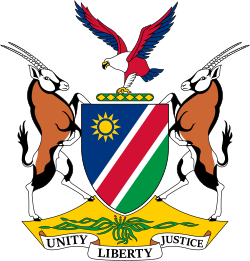 |
|---|
The Ministry of Industrialisation and Trade (MIT) was a government ministry of Namibia, with headquarters in Windhoek. It was created at Namibian independence in 1990 as Ministry of Trade and Industry, [1] renamed Ministry of Industrialisation, Trade and SME Development in 2015, and got the name Ministry of Industrialisation and Trade in 2020. The first Namibian minister of trade was Ben Amathila. [2]
Contents
In 2025 the ministry was disestablished. The trade portfolio was given to the foreign affairs ministry, and the industry portfolio to the Ministry of Mines and Energy. [3] The current [update] Minister of International Relations and Trade is Selma Ashipala-Musavyi, the Minister of Mines, Energy and Industry is Natangwe Ithete.



